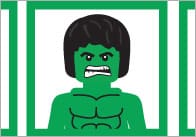Sensory play ideas & resources

When I was looking at resources and ways of working for my book How to help your Dyslexic and Dyspraxic Child I started to look very closely at the whole area of sensory play. Obviously it is crucial for children who have dyspraxia and need to gain a sense of their environment and develop fine motor skills in hundreds of different ways. But I also discovered a world of research out there.
According to The Importance of Sensory Play with Tactile Toys, a site for adoptive parents (Adoptive Resources), some children have confused sensory messages. Perhaps they have been abused or neglected but it could be something as simple as being strapped in a pushchair for prolonged periods of time. The site claims, “Tactile toys (by nature of their intriguing physical from and texture invite children to touch them, to manipulate them and explore them by stretching them, pulling/pinching, squishing, squeezing and kneading them. All these actions stimulate sensors deep within the muscles/joints … that encourage a child’s awareness of their body (particularly those different body parts in physical contact with the toy such as fingers, hands and arms) and generate a bodily felt sense of themselves in that moment.”
Many companies sell sensory and tactile toys. Try TTS, which has spine balls, spaghetti balls and a Koosh (which looks a bit like a deep sea anemone). Or Sense Toys, which sells toys for children with ASD (Autism Spectrum Disorders) and has a special cushion with a pimpled surface to practise balance and co-ordination skills. A new multisensory musical instrument called the Skoog is a white squeezy cube with colourful curved discs on 5 sides, which lets very severely disabled children make music for themselves. Children can use any part of their body: squeeze the Skoog to blow a flute or tap it to strike a xylophone and it can be programmed to respond to the slightest touch.
One really simple idea is the Treasure basket. A company called Play to Z ran a research project in conjunction with Anglia Ruskin University which showed that children today are much more likely to play indoors rather than go out. As a result they are deprived of all those sensory experiences such as making dens and mud pies and rose petal perfume. The company has created a Treasure Basket, but also gives guidance on making your own. Take a basket, preferably quite a deep one with an interesting texture such as wicker, raffia or hessian and fill it with 40 or 50 objects made from different materials: cardboard, stone, rubber, metal, wood. Think plastic spoons the lid off a jam jar a pebble, a duster, a cork table mat. These ‘treasures’ provide a great stimulus for play – for touching and talking and imagining.
Sal’s book How to help your Dyslexic and Dyspraxic Child is available from Crimson Publishing.
Popular Teaching Resources
Stay Up To Date
Sign up for our newsletter and we’ll let you know when we create new early years resources.





